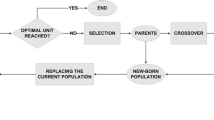Abstract
A multilayer artificial neural network (ANN) is used to model the reversed-phase liquid chromatography retention times of 16 selected compounds, including purines, pyrimidines and nucleosides. The analysed data, taken from literature, were collected in acetonitrile-water eluents under the application of 16 different multilinear gradients. The parameters describing the gradient profile together with solute descriptors are considered as the independent variables of an ANN-based model providing the retention time as response. Categorical variables or, alternatively, a selected set of molecular descriptors of computational origin are adopted to represent the solutes. Network training, validation and testing are performed preliminarily using data of 12, 2 and 4 gradients, respectively and successively, to investigate model performance under more severe calibration conditions, with data of 9, 2 and 7 gradients. The proposed approach allows a quite accurate prediction of retention times of the target analytes in external multilinear gradients. Categorical variables can successfully represent the target solutes when the model is called to transfer retention data from calibration to external gradients. In particular, using a five-dimensional bit string to represent the analytes, mean errors on retention times are 2 and 3 % under the most and less favourable calibration conditions, respectively. A comparable performance is observed if the categorical variables are replaced by five molecular descriptors, selected by a genetic algorithm within a large set of structural variables of computational origin.




Similar content being viewed by others
References
Poole CF (2003) The essence of chromatography. Elsevier Science B.V., Amsterdam
Jandera P (2006) J Chromatogr A 1126:195–218
Fatemi MH, Abraham MH, Poole CF (2008) J Chromatogr A 1190:241–252
Bączek T, Kaliszan R (2002) J Chromatogr A 962:41–55
Téllez A, Rosés M, Bosch E (2009) Anal Chem 81:9135–9145
Nikitas P, Pappa-Louisi A, Papageorgiou A (2007) J Chromatogr A 1157:178–186
Concha-Herrera V, Vivó-Truyols G, Torres-Lapasió JR, García-Alvarez-Coque MC (2005) J Chromatogr A 1063:79–88
Ortiz-Bolsico C, Torres-Lapasió JR, García-Alvarez-Coque MC (2014) J Chromatogr A 1350:51–60
De Beer M, Lynen F, Chen K, Ferguson P, Hanna-Brown M, Sandra P (2010) Anal Chem 82:1733–1743
Neue UD, Kuss H-J (2010) J Chromatogr A 1217:3794–3808
Héberger K (2007) J Chromatogr A 1158:273–305
Loukas YL (2000) J Chromatogr A 904:119–129
Put R, Vander Heyden Y (2007) Anal Chim Acta 602:164–172
Cirera-Domènech E, Estrada-Tejedor R, Broto-Puig F, Teixidó J, Gassiot-Matas M, Comellas L, Lliberia JL, Méndez A, Paz-Estivill S, Delgado-Ortiz MR (2013) J Chromatogr A 1276:65–77
Bezerra MA, Santelli RE, Oliveira EP, Villar LS, Escaleira LA (2008) Talanta 76:965–977
Novotná K, Havliš J, Havel J (2005) J Chromatogr A 1096:50–57
Tran ATK, Hyne RV, Pablo F, Day WR, Doble P (2007) Talanta 71:1268–1275
Tham SY, Agatonovic-Kustrin S (2002) J Pharm Biomed Anal 28:581–590
Golubovíc J, Protíc A, Zečević M, Otaševíc B, Mikić M, Živanović L (2012) Talanta 100:329–337
Carlucci G, D’Archivio AA, Maggi MA, Mazzeo P, Ruggieri F (2007) Anal Chim Acta 601:68–76
D’Archivio AA, Giannitto A, Maggi MA, Ruggieri F (2012) Anal Chim Acta 717:52–60
D’Archivio AA, Maggi MA, Ruggieri F (2011) Anal Chim Acta 690:35–46
D’Archivio AA, Maggi MA, Ruggieri F (2014) J Sep Sci 37:1930–1936
Nikitas P, Pappa-Louisi A, Agrafiotou P, Mansour A (2011) J Chromatogr A 1218:5658–5663
Zupan J, Gasteiger J (1999) Neural networks in chemistry and drug design. Wiley, Weinheim
Marini F, Bucci R, Magrì AL, Magrì AD (2008) Microchem J 88:178–185
Svozil D, Kvasnička V, Pospíchal J (1997) Chemom Intell Lab Syst 39:43–62
Lopez R (2012). OpenNN: Open Neural Networks Library (Version 0.9). Retrieved from http://flood.sourceforge.net
Härdle W, Simar L (2003) Applied multivariate statistical analysis. Springer, Berlin
Mohamadi F, Richards NG, Guida WC, Liskamp R, Caufield C, Chang G, Hendrickson T, Still WC (1990) J Comput Chem 11:440–467
Talete srl, DRAGON 6.0 for Windows (Software for Molecular Descriptor Calculations); http://www.talete.mi.it/
Todeschini R, Consonni V (2000) Handbook of molecular descriptors. Wiley, Weinheim
Leardi R (ed) (2003) Nature-inspired methods in chemometrics: genetic algorithms and artificial neural networks. In: Data handling in science and technology, vol 23. Elsevier, Amsterdam
Wehrens R, Buydens LMC (1998) Trends Anal Chem 17:193–203
Forina M, Lanteri S, Armanino C, Casolino C, Casale M, Oliveri P. V-PARVUS 2010. Dip. Chimica e Tecnologie Farmaceutiche ed Alimentari, University of Genova. http://www.parvus.unige.it
Author information
Authors and Affiliations
Corresponding author
Electronic supplementary material
Below is the link to the electronic supplementary material.
ESM 1
(PDF 10 kb)
Rights and permissions
About this article
Cite this article
D’Archivio, A.A., Maggi, M.A. & Ruggieri, F. Artificial neural network prediction of multilinear gradient retention in reversed-phase HPLC: comprehensive QSRR-based models combining categorical or structural solute descriptors and gradient profile parameters. Anal Bioanal Chem 407, 1181–1190 (2015). https://doi.org/10.1007/s00216-014-8317-3
Received:
Revised:
Accepted:
Published:
Issue Date:
DOI: https://doi.org/10.1007/s00216-014-8317-3




